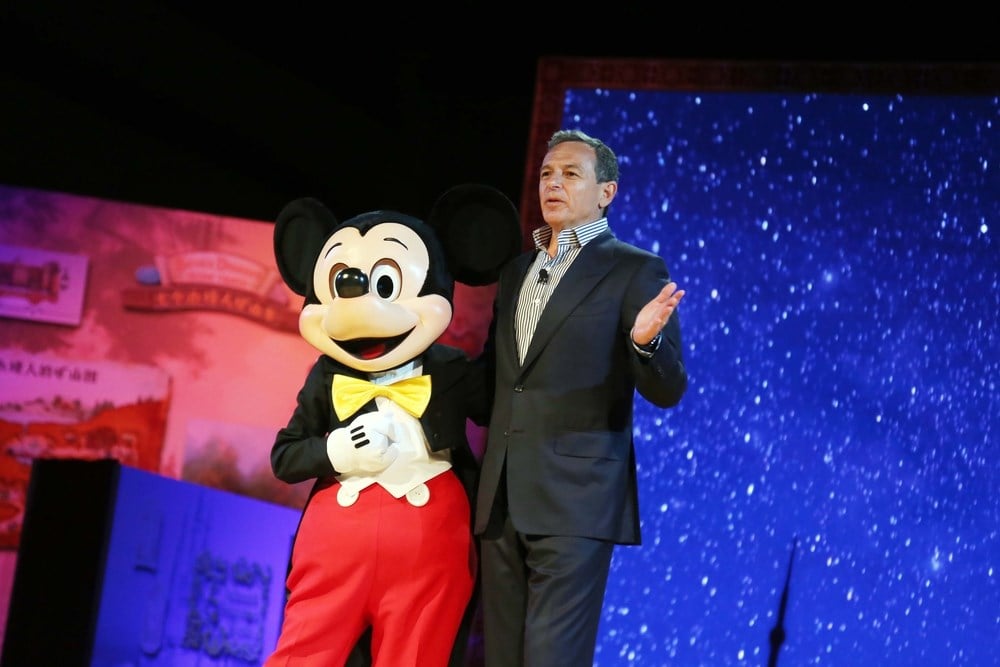
For Walt Disney Co. (NYSE: DIS) shareholders, their brokerage statements haven’t exactly been the happiest place on earth. The stock has lagged the S&P 500 for the past 10 years, although it’s certainly grown earnings and had numerous business successes during that time.
In the most recent quarterly earnings call on August 9, MoffettNathanson analyst Michael Nathanson asked a question that’s been bandied about in the media for the past few years, with the chorus growing louder recently.
"Given the thinking you've done about the future of Disney, why doesn't it make sense to create two Disney companies: one focused on parks, Disney+ and then the studio IP that drives that flywheel, and then one on everything else? So why not make a clean break?" Nathanson asked.
As you might expect, Disney CEO Bob Iger wasn’t about to announce a company breakup in the conference call Q&A session.
Looking At Strategic Options
Instead, he answered, "I'm not going to comment on the future structure of the company or the asset makeup of the company. As I've said, we're looking at strategic options both for ESPN and for the linear networks, obviously addressing all of the challenges that those businesses are facing."
The term "strategic options" is often corporate-speak for "considering a sale."
When Nathanson referenced other business units besides theme parks, the Disney+ streaming service, and production studios, he meant properties such as the ABC Television Network, eight company-owned ABC TV stations, ESPN, FX, and a 50% stake in the A+E TV Network, and Hulu, among others.
Over the past year, it’s trailed its index by a significant margin, declining by 28.52%, versus the S&P’s gain of 5.79%.
The stock got a bump immediately after the third-quarter report, as earnings topped Wall Street views, as you can see using MarketBeat’s Disney earnings data. But revenue came in short. The company said growth in streaming services was disappointing.
Disney+ Customer Numbers Declined
The number of paid customers for the Disney+ streaming service declined year-over-year, and fell below analysts’ estimates. One problem was the Disney+ Hotstar service in India, which saw a significant drop in subscribers after the network lost the rights to televise India Premier League cricket.
But that specific problem drives home a big problem Disney has: The company’s focus may have become too broad.
There’s a reason the era of the big conglomerates came to an end, and even in the modern era, Johnson & Johnson (NYSE: JNJ)spun off Kenvue Inc. (NYSE: KVUE) so each could concentrate on its core business. Similarly, General Electric (NYSE: GE), once a company with reach into numerous industries, spun off GE HealthCare Technologies Inc. (NASDAQ: GEHC), and plans to spin its energy unit, Vernova, into its own company in early 2024.
Iger is aware that Disney’s portfolio of businesses may be spanning too many areas. He’s mentioned that the company may have grown too large. At the Allen & Co. conference in Idaho last month, Iger told a CNBC reporter that he would take an “expansive look” at the company’s TV business, saying some of those assets may not be core to Disney’s business. He did not elaborate any further on possible plans.
3 Business Will Drive Growth
That theme, however, keeps coming up. In the August 10 earnings call, Iger said, “Moving forward, I believe three businesses will drive the greatest growth and value creation over the next five years. They are our film studios, our parks business, and streaming, all of which are inextricably linked to our brands and franchises.”
There are plenty of variables to consider. For example, while analysts believe the future of streaming is bright, Disney has a dilemma when it comes to ESPN. Rights to sporting events are costly, and leagues can switch carriers, as Disney recently saw with its Indian cricket streaming rights.
Will customers pony up for a streaming version of ESPN, separate from additional services? A recent spate of layoffs at the sports network illustrates the need to cut costs. ESPN was once a gold mine for Disney, but revenue has been declining.
While it won’t be easy to untangle all of Disney’s various business units, one thing is clear: Mickey Mouse, Disneyland and all the familiar iconic brands will remain part of the core company, even if other properties are unloaded.












